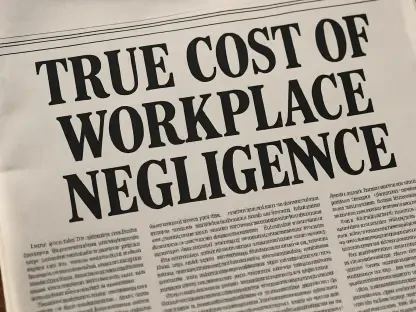In the high-stakes world of modern leadership, imagine a manager racing to address employee concerns within hours of receiving critical feedback, only to find the team questioning whether the swift action was genuine or just a hollow gesture. This scenario plays out in workplaces every day, revealing a hidden tension between speed and sincerity. While rapid responses might seem like the hallmark of a responsive leader, they can backfire, casting doubt on authenticity and eroding trust. This dynamic, often overlooked, holds profound implications for how leaders navigate feedback in today’s transparency-driven organizations.
Why Speed in Leadership Response Sparks Doubt
The push for quick action in response to employee input is a common expectation in fast-paced corporate environments. Leaders are often taught that immediacy signals attentiveness and a commitment to improvement. However, when changes are rolled out at lightning speed, employees may start to wonder if the response was truly thoughtful or merely a superficial attempt to placate concerns. This skepticism stems from a perception that meaningful change requires time for reflection, consultation, and planning—elements that a rushed fix might lack.
A deeper issue lies in the mismatch between employee expectations and leader behavior. When a complex problem, such as a flawed company policy, is “solved” overnight, it can feel too convenient, almost as if the leader prioritized optics over substance. Studies suggest that this doubt isn’t just anecdotal; it’s a measurable reaction that can impact how employees engage with future feedback opportunities. The speed of a response, while intended to build confidence, often becomes a lens through which sincerity is judged.
The Rising Stakes of Authenticity in Leadership
Authenticity has emerged as a cornerstone of effective leadership, especially in an era where employees demand transparency and accountability. It’s no longer enough for leaders to act on feedback; the motivation behind those actions is under intense scrutiny. Research from firms like McLean & Co. indicates that superficial responses or broken promises can lead to a significant drop in engagement, with some studies showing up to a 30% decline in morale when trust is compromised.
This heightened focus on authenticity isn’t just a trend—it’s a fundamental shift in workplace dynamics. Employees are more vocal than ever, using tools like anonymous surveys and open forums to share concerns, and they expect leaders to respond with integrity. The challenge lies in proving that changes are driven by genuine intent rather than a need to appear responsive, a balance that directly affects team cohesion and long-term retention.
Moreover, the stakes extend beyond individual interactions to organizational culture. Companies striving to foster feedback-driven environments find that authenticity, or the lack thereof, shapes how safe employees feel to speak up. When leaders fail to meet this expectation, the ripple effect can stifle dialogue, leaving underlying issues unaddressed and weakening the foundation of trust.
Unpacking the Authenticity Penalty: When Fast Fixes Fail
The term “authenticity penalty” captures a specific phenomenon: the loss of credibility leaders face when their rapid responses to feedback are perceived as insincere. Research published in a prominent management journal reveals striking patterns across multiple studies. One key finding shows that employees often view quick fixes, especially for intricate issues, as performative, with 62% of surveyed workers expressing doubt about the depth of consideration behind such actions.
In contrast, slower, more deliberate changes tend to resonate more deeply with teams. For example, a leader who takes weeks to revise a problematic remote work policy, consulting staff along the way, is often seen as more committed than one who announces an instant solution. This gradual approach signals that feedback was weighed carefully, fostering a sense of being truly heard among employees.
Context plays a critical role in this perception. For simpler matters, like adjusting meeting times, a fast response can be a positive sign of attentiveness without triggering major skepticism, though even then, a slight dip in perceived authenticity may occur. These insights, drawn from diverse employee samples, underscore the delicate tightrope leaders must walk—balancing the need to act with the need to appear thoughtful.
Voices from Research: Insights and Real-World Reflections
Danbee Chon, an assistant professor at the University of South Florida’s Muma College of Business, offers a compelling perspective on this issue. “Employees crave change that feels rooted in real understanding, and that often means witnessing a leader take time to process feedback before acting,” she explains. Her research highlights how rushed responses can seem “too good to be true,” particularly when addressing deeply entrenched challenges, leading to a disconnect between intention and perception.
This academic insight mirrors experiences in everyday workplaces. Picture a department head who, after hearing complaints about an unfair bonus structure, promises a complete overhaul within days. While the announcement might initially spark hope, employees later question whether the solution was carefully crafted or simply a tactic to quiet dissent. Such scenarios illustrate how timing can overshadow even well-meaning actions.
Beyond data, these reflections point to a broader truth: trust is built not just on what leaders do, but on how they do it. Employees are attuned to the nuances of decision-making processes, and a lack of visible deliberation can undermine even the most positive outcomes. This interplay between action and perception remains a critical factor in shaping workplace relationships.
Navigating the Balance: Practical Strategies for Leaders
Finding the sweet spot between responsiveness and authenticity requires intentional strategies tailored to the nature of the feedback. For complex issues, such as cultural shifts or systemic inequities, leaders should acknowledge the input immediately but set a clear timeline for deeper evaluation and action. This approach communicates that the concern is taken seriously while avoiding the pitfall of a hasty, potentially shallow resolution.
For more straightforward feedback, like requests for minor workflow adjustments, swift implementation can demonstrate agility and care. However, even in these cases, a brief explanation of why the change was possible so quickly helps maintain credibility. Transparency about the decision-making process reassures employees that the action wasn’t arbitrary or purely for show.
Finally, consistency is paramount. Leaders must follow through on commitments, whether the change is fast or slow, as broken promises are a proven trust-breaker. Sharing periodic updates on how feedback is being addressed—perhaps through team meetings or internal memos—further reinforces sincerity. By aligning pace with context and maintaining open communication, leaders can cultivate a feedback culture where employees feel valued and understood.
Closing Thoughts on Timing and Trust
Looking back, the journey through the authenticity penalty reveals a nuanced challenge that many leaders grapple with in their efforts to respond to employee feedback. The balance between speed and sincerity proves to be a defining factor in how trust is built or broken within teams. Each misstep in timing offers a lesson, showing that perceptions often matter as much as actions.
Moving forward, leaders are encouraged to adopt a mindful approach, calibrating their responses to the complexity of the issues at hand. By prioritizing transparency and consistent follow-through, they can transform feedback into a powerful tool for growth. The path ahead lies in embracing deliberate pacing as a mark of genuine care, ensuring that every change resonates with authenticity and strengthens workplace bonds.









